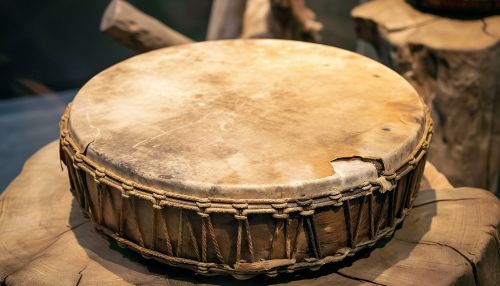Drum
History
The drum is one of the oldest known musical instruments, with archaeological evidence of drums dating back to 5500 BC in what is now modern-day Ukraine. The drum, as we understand it today, has evolved significantly over the centuries, with different cultures and civilizations adding their unique touches and innovations.


Construction
A drum typically consists of at least one membrane, known as a drumhead or drum skin, that is stretched over a shell and struck, either directly with the player's hands, or with a drum stick, to produce sound. The drumhead is typically made from animal skin or plastic, while the shell can be made from a variety of materials, including wood, metal, and synthetic materials.
Types of Drums
There are many different types of drums, each with their own unique characteristics and uses. Some of the most common types include the bass drum, the snare drum, the tom-tom drum, and the timpani.
Bass Drum
The bass drum, or kick drum, is a large drum that produces a low, deep tone. It is typically played with a foot pedal and is a central part of most modern drum kits.
Snare Drum
The snare drum is a smaller drum that produces a sharp, staccato sound. It is named for the snares, or wires, that are stretched across the bottom of the drum, which vibrate when the drum is struck, creating its distinctive sound.
Tom-Tom Drum
The tom-tom drum is a cylindrical drum with no snares. It can produce a wide range of pitches, depending on its size and the tension of its drumhead.
Timpani
The timpani, or kettledrum, is a large, bowl-shaped drum that is typically played with soft mallets. It is capable of producing definite pitches and is often used in orchestras.
Playing Techniques
There are many different techniques for playing the drum, ranging from simple hand-beating to complex patterns and rhythms played with drum sticks or mallets. Some of the most common techniques include single strokes, double strokes, flams, and drags.
Cultural Significance
Drums have played a significant role in many cultures throughout history. They have been used in religious ceremonies, as a means of communication, and as a central part of music and dance. In many cultures, drumming is more than just a musical activity; it is a spiritual practice and a vital part of the community.
